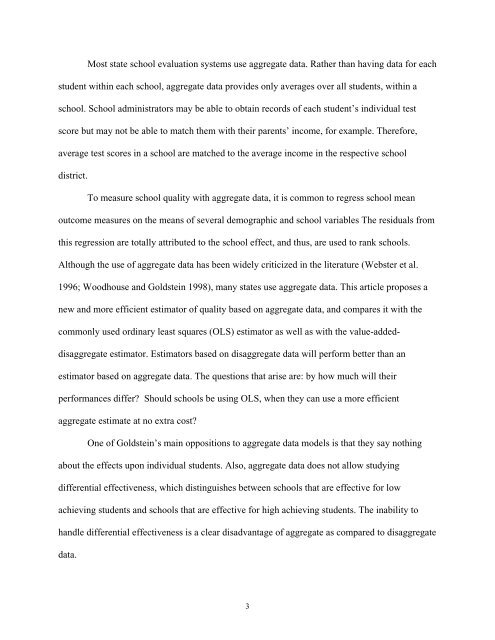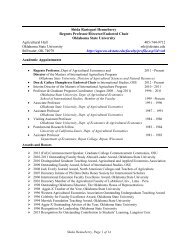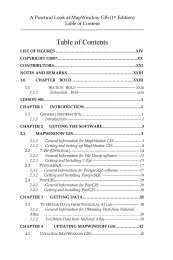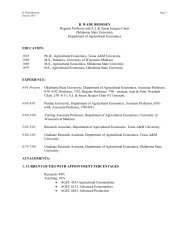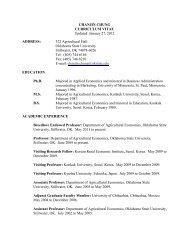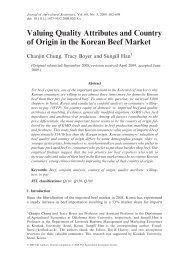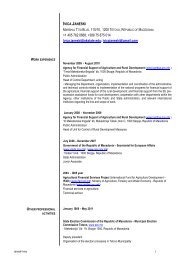Aggregate versus Disaggregate Data in Measuring School Quality
Aggregate versus Disaggregate Data in Measuring School Quality
Aggregate versus Disaggregate Data in Measuring School Quality
You also want an ePaper? Increase the reach of your titles
YUMPU automatically turns print PDFs into web optimized ePapers that Google loves.
Most state school evaluation systems use aggregate data. Rather than hav<strong>in</strong>g data for each<br />
student with<strong>in</strong> each school, aggregate data provides only averages over all students, with<strong>in</strong> a<br />
school. <strong>School</strong> adm<strong>in</strong>istrators may be able to obta<strong>in</strong> records of each student’s <strong>in</strong>dividual test<br />
score but may not be able to match them with their parents’ <strong>in</strong>come, for example. Therefore,<br />
average test scores <strong>in</strong> a school are matched to the average <strong>in</strong>come <strong>in</strong> the respective school<br />
district.<br />
To measure school quality with aggregate data, it is common to regress school mean<br />
outcome measures on the means of several demographic and school variables The residuals from<br />
this regression are totally attributed to the school effect, and thus, are used to rank schools.<br />
Although the use of aggregate data has been widely criticized <strong>in</strong> the literature (Webster et al.<br />
1996; Woodhouse and Goldste<strong>in</strong> 1998), many states use aggregate data. This article proposes a<br />
new and more efficient estimator of quality based on aggregate data, and compares it with the<br />
commonly used ord<strong>in</strong>ary least squares (OLS) estimator as well as with the value-added-<br />
disaggregate estimator. Estimators based on disaggregate data will perform better than an<br />
estimator based on aggregate data. The questions that arise are: by how much will their<br />
performances differ? Should schools be us<strong>in</strong>g OLS, when they can use a more efficient<br />
aggregate estimate at no extra cost?<br />
One of Goldste<strong>in</strong>’s ma<strong>in</strong> oppositions to aggregate data models is that they say noth<strong>in</strong>g<br />
about the effects upon <strong>in</strong>dividual students. Also, aggregate data does not allow study<strong>in</strong>g<br />
differential effectiveness, which dist<strong>in</strong>guishes between schools that are effective for low<br />
achiev<strong>in</strong>g students and schools that are effective for high achiev<strong>in</strong>g students. The <strong>in</strong>ability to<br />
handle differential effectiveness is a clear disadvantage of aggregate as compared to disaggregate<br />
data.<br />
3


